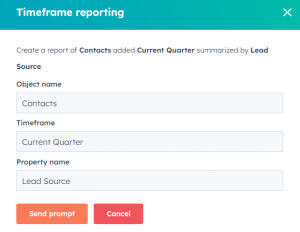Hueskee Lewis and the News. Jamie Skee Curtis. Skeeonardo DiCaprio. What do all these not-quite-right sounding pop culture references have in common?
They’re all teams that play in The Skee League. And thanks to their enthusiastic (and paying) participation, Director of Chicago League Operations Mike Fraser can say something truly spectacular: He makes money when people play skeeball.
Wait, skeeball? That Chuck E. Cheese arcade game in which you roll wooden balls down a lane into circular targets? Yep, that’s the one. For those who aren’t familiar, it’s kind of similar to bowling. But instead of knocking down pins, the goal is to sink balls into 10, 20, 30, 40, 50 and 100-point targets. And it’s kind of a weird way to make money. But make money off skeeball, Fraser does.
He hasn’t always been in the skeeball business. It’s something he fell into a few years ago, and then he just kept rolling with it. “I figured it would be a fun way to meet some people while earning some extra walking around money,” Fraser said. “It ended up taking off and taking over my life completely.”
While he didn’t share his exact income, running the skeeball league is Fraser’s full-time “job.” Through his work, he’s learned quite a lot about running an arcade game-centric business.
Think getting paid to hang out at a bar and play games with your friends sounds fun? Here’s how Fraser got into skeeball at the ground level, how he built his unconventional business and what he recommends if you want to follow his lead.
1. Start a League
Here’s one way to get people to pay to play your favorite game: Organize a league, recruit teams and charge membership dues. If you’ve got an untapped market on your hands, even better. The Skee League is and always has been the only social league of its kind in Chicago.
Obviously, the more teams you get to buy in, the more money you make. And that means a lot of moving parts. Keep in mind that organizing any sort of sports or recreational league isn’t necessarily way to make a quick buck.
“The league concept is great, but without any structure or organizational systems in place, it’s complete chaos,” Fraser advises.
2. Offer Ridiculously Good Value (and Good Times)
First and foremost, Fraser wants people to have a good time. But he also wants them to be repeat customers and come back “skeeson” after skeeson. The less time he has to spend on recruiting new members, the more time he can spend on scaling the business.
Fraser works hard to make sure league members get their money’s worth. From keeping members up-to-date with email newsletters, weekly “skeevivor” tournaments and the end-of-season Skeeapalooza event, he’s always cooking up some skee-related fun.
“Put in direct comparison with other social sports leagues, The Skee League is more expensive to join,” Fraser said. (Each member pays $ 100 per six-week season, and each team has three members.) “But you’ll be hard-pressed to find league members who don’t feel like they’re getting a good value. I put my heart and soul into creating great experiences and developing a fun communitskee. That is something I will never compromise on.”
3. Make a Serious Investment to Scale
After a couple of years running the league on two machines owned by an arcade game coin operator —meaning he had to essentially rent them during league play — Fraser decided to take his business up a notch.
He bought his own skeeball machine — not a purchase one takes lightly. The machine weighs 400 pounds and is six feet tall.
“The machines aren’t cheap, ranging between $ 3,500 and $ 7,000 depending on make and model,” he said. Despite the cost, he had a plan: It was an investment to help him scale.
Fraser installed the machine at a bar where he opened a second league location. This league is more profitable because he doesn’t have to pay for players to roll. Additionally, the coin-operated machine is open to the public during non-league nights. So Fraser makes money every time someone gets inspired after a couple of beers to roll a few rounds of skeeball.
4. Build Additional Revenue Streams
As any good entrepreneur knows, expanding your reach to new customers is good for business — especially when they end up falling in love with your product. So Fraser’s always on the lookout for new ways to get people rolling.
Now that he owns and operates his own skeeball machine, he has more opportunities for revenue. He just launched private parties and corporate events. People can rent the machine for a period of time or can pay to host their own tournaments.
Fraser will soon start selling The Skee League merchandise online (a.k.a. SKEE-Commerce) to bring in more revenue from T-shirts and other skee-ball swag.
5. Be Prepared for Hidden Costs
While every $ 5 bill someone feeds into Fraser’s skeeball machine goes straight to his pocket, there are plenty of hidden costs. At some point, the machine will require maintenance. “It’s kind of like a car,” he said. “Your real costs begin when things start to break down.”
Other hidden costs include state and city licenses, transportation, printing, marketing, office supplies, trophies and prizes. Then you have to factor in that he’s at a bar for six to eight hours a night during league play. These can be long nights, all in the name of skeeball.
Though skeeball might not have made Fraser a millionaire (yet), he has a true passion for his work and his “coworkers.” He’s built a loyal following of league members and a community of skee-obsessed friends. There’s even one couple whose love blossomed over the course of several skeesons — and now they’re married! Who knew skeeball could not only be a way to make money, but also the secret to true romance?
Your Turn: If you had to make money off an arcade game, which one do you think would be the most profitable?
(210)




